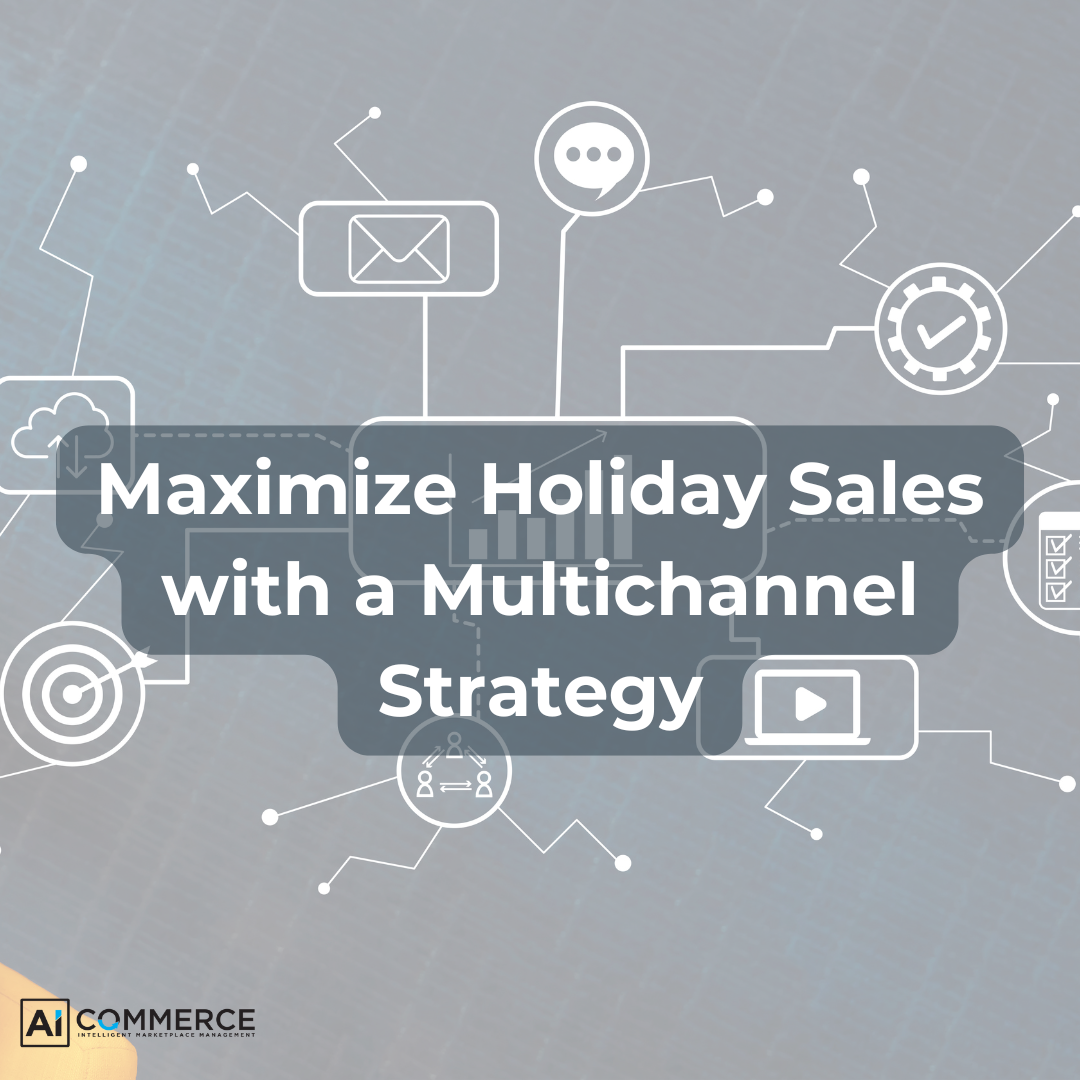Improving Marketplace Product Listing Conversion Rates
Most retail and eCommerce veterans are very familiar with the “Sales Equation” where Revenue = Traffic x Conversion Rate x Average Order Value. As a seller, traffic (i.e. clicks, visits), conversion rate (CVR), and average order value (AOV) are your main levers to increase revenue. While advertising, views, and traffic sources get much of the attention and press in marketing conversations, it’s important to continually test and improve both CVR and AOV as well. Today, we’ll dive into CVR improvement opportunities.
What is Conversion Rate & Why is it Important?
Conversion rate is the percentage of visitors who take a desired action, such as making a purchase, filling out a form, or subscribing to a service. It is an important metric for retailers because it reflects the effectiveness of their marketing and advertising efforts and can help identify areas for improvement.
Conversion Rate (CVR) = Desired Actions / Clicks
Some key points about conversion rate include:
- The conversion rate is a critical metric, as it indicates the percentage of visitors who turn into customers.
- Conversion rates can vary widely depending on the retailer, product, price, retail media network, and advertising. For example, Amazon and Walmart may have a higher conversion rate for consumer electronics than for clothing, while Target may have a higher conversion rate for home goods than for beauty products.
- Brands use a variety of tactics to improve their conversion rates, including optimizing product pages, user experience, testing different marketing content, messages and calls-to-action, and using retargeting campaigns to reach visitors who have shown interest in their products.
- Brands should also use data and analytics to track and analyze their conversion rates over time, identify trends and patterns, and make data-driven decisions about their marketing strategies.
- Finally, a high conversion rate is important because it can lead to increased revenue and profitability for the brand, while a low conversion rate may indicate a need for changes to their marketing strategy, products, content, price, or product imagery to better engage and convert visitors.
How to Find Your Current Conversion Rate
On retail media networks like Amazon, Walmart, Target, and others, you can find your conversion rate by accessing your account dashboard and analyzing the performance metrics for your product listings or advertising campaigns. These platforms typically provide data on clicks, impressions, orders, sales revenue, and other key performance indicators, which you can use to calculate your conversion rate.
- Define your time period. Decide on a specific time frame to measure your conversion rate, such as the past week, month, or quarter.
- Calculate your conversion rate. To calculate your conversion rate, divide the number of conversions (i.e. purchases, sign-ups, etc.) by the total number of visitors to your website during the time period you defined. For example, if you had 500 visitors and 25 conversions, your conversion rate would be 5%.
- Analyze and optimize. Once you have your conversion rate data, analyze the results and identify areas for improvement. Look for patterns and trends, such as which products have the highest conversion rates or which ad campaigns or ad types are driving the most conversions. Use this information to optimize your campaigns to improve your conversion rate over time.
What is Considered a “Good” Purchase Conversion Rate on Amazon?
The ideal purchase conversion rate for Retail Media Networks (RMNs) varies depending on the product category, the type of campaign, and the industry standards. However, some benchmarks and examples include:
- According to Amazon, the average conversion rate for most categories is between 10% to 15%. However, some categories may have higher or lower rates, for example, consumer electronics tend to have a higher conversion rate compared to clothing.
- The average conversion rate for most categories on Walmart is between 2% to 4%. However, some categories may have higher or lower rates, for example, electronics tend to have a higher conversion rate compared to home and garden.
- On Target's advertising platform, the average conversion rate varies by industry and campaign type. For instance, the average conversion rate for health and beauty campaigns on Target is about 3%, while the rate for baby products is around 5%.
- In general, a conversion rate of 2% or higher is considered good for most industries and campaigns. However, high-value items, such as luxury goods or furniture, may have a lower conversion rate but still generate significant revenue.
- Some factors that can impact your conversion rate on retail media networks include product pricing, competition, customer reviews, ad targeting, and website design and user experience.
- To improve your conversion rate, you can test different ad creatives, landing pages, product descriptions, and pricing strategies, as well as leverage customer feedback and reviews to address any concerns or issues that may be affecting your conversions.
Overall, a good conversion rate on a retail media network is one that aligns with your industry standards and campaign objectives, generates a positive return on investment, and helps you achieve your business goals.
Tips for Increasing Conversion Rate
- Unique Product Positioning: Understand, and surpass, your target customer’s product expectations. Research your competition to see what features and differentiators the general industry focuses on or is viewed as standard features. While targeted advertising, search results, and an attractive price/image may gain qualified traffic, it’s important that the product details meet the desires of the consumer - and differentiates through features, price, shipping times, imagery, etc. to gain that conversion.
- Optimize Your Product Listings: Ensure that your product listings have clear and compelling titles, high-quality images and videos, detailed and accurate descriptions, and relevant keywords to help them stand out and attract potential customers.
- Leverage Customer Reviews and Ratings: Encourage customers to leave reviews and ratings for your products and respond to their feedback promptly and professionally. Positive reviews and ratings can help build trust and credibility, and address any concerns or questions that customers may have.
- Use Coupons and Discounts: Offer coupons and discounts for your products to incentivize customers to make a purchase. You can also create limited-time deals or bundle products to increase their value and appeal.
- Optimize Your Advertising Campaigns: Use targeted advertising on retail media networks to reach your desired audience and drive traffic to your product listings. Target relevant keywords, competitor listings, and customer behaviors and interests. Test different ad creatives, placements, and targeting strategies to find what works best for your business.
- Monitor and Analyze Your Performance: Regularly track and analyze your performance metrics on retail media networks, such as click-through rates, conversion rates, and return on ad spend, to identify areas for improvement and optimize your strategies over time.
As a seller, it’s important to remember the main levers of the Sales Equation - Traffic, CVR, and AOV - and work to optimize all three to increase revenue. Improving conversion rates can be just as impactful to revenue as optimizing advertising, but rarely receives an equal amount of attention.
More About aiCommerce
aiCommerce is a global digital marketing agency with a focus on retail and eCommerce marketplaces. Started by three digital marketing experts, aiCommerce is primed with decades of digital marketing experience and backed by our 90-day grow and know guarantee, we can help your brand grow across eCommerce channels to gain brand awareness and increase sales! Now is the perfect time to utilize our eCommerce experts to help grow your business.




